|
|
||||
|
By Jo Nova The media is totally bought and soldA bunch of giant Foundations (run by billionaires that also invest in renewable energy) gave Associated Press (AP) $8 million dollars last year to push the climate propaganda even harder than it has been running for the last 20 years. In return AP, which calls itself a not-for-profit news agency took the grant and then ran 64 climate crisis or ESG stories in the next year. They called this surge a “sweeping climate journalism initiative”. Sixty four stories doesn’t sound like much but AP stories are repeated in 1,300 newspapers and broadcasters. So 64 stories could really mean 83,200 stories. The money came from the Rockefeller Foundation, Quadrivium (James Murdoch, who is son of Rupert), the William and Flora Hewlett Foundation, the Walton Family Foundation (Walmart), and the Howard Hughes Medical Institute. Looks like, smells like, advertising money for Renewable investors disguised as a grant?At least some of these Billionaires may be paying for media stories that could improve the return on their green investments. According to InfluenceWatch, two years ago Quadrivium Foundation committed to invest $250 million US in BlackRock Inc for “green energy infrastructure”. Likewise the Rockefeller heirs invested in renewables years ago, and the Walton family have made hundreds of millions of dollars from solar power. STUDY: AP Pushes Woke Terms Across 64 Climate Stories After $8M Grant from Leftist OrgsJoseph Vazquez and Luis Corneli, Newsbusters AP announced Feb. 15, 2022, that it would “significantly expand its climate coverage” with the goal to “infuse” the media landscape with climate journalism backed solely by private interest groups. AP called the new development a “sweeping climate journalism initiative” and claimed in its press release that it would retain “complete editorial control of all content.” AP also claims on its “About Us” page that it is in the business of “unbiased news,” which is little more than a pathetic joke. The so-called “journalism” AP has been doing on climate involves behaving like the de facto mouthpiece for its major left-wing donors who have an obsession with pushing apocalyptic climate narratives on the internet. It’s a parody of journalism: AP said the money came “without strings” AP summarized Carovillano’s claim that “AP accepts money to cover certain areas but without strings attached; the funders have no influence on the stories that are done.” Carovillano, in this particular case, called the activist investment a “‘mutually beneficial arrangement.’” And if politicians got free houses or holidays from companies they made laws about, they could just say it was a “mutually beneficial arrangement” right? And we would laugh out of town, any politician that said that. “The AP is supposed to be a newswire service, reporting hard news,” Legal Senior Policy Fellow at the Energy and Environment Legal Institute Steve Milloy told MRC Business. “But it has deteriorated into a climate propaganda outfit for left-wing foundations. The AP routinely reports just one side of any climate story. If it lets its readers know there is another side, that only occurs via bogus ‘fact-check’ articles that are intended for use by climate activists to get other outlets to censor climate skeptics.” Because AP stories are run in many other news outlets, the propaganda is amplified but the payoff money gets laundered through the other outlets, which don’t mention the conflict of interest. [Steve Milloy] continued: “The AP imagines that its corruption of the news is excused because it discloses on its website that it is being paid to report one-side of every climate story. But its stories are run by other media outlets who don’t make the necessary disclosures.” Climate Depot founder Marc Morano also ripped apart AP’s unashamed partnership with left-wing groups in comments to MRC Business: The media is not only ideology in sync with the climate agenda of our government, international organizations, academia, and the billionaire class, but they are also quite literally being paid to promote the climate scare. AP has received millions from ‘philanthropic grants’ to toss out all objectivity and balance in their reporting. The AP and the corporate media engage in paid press release journalism. The media has zero obligation to serve as watchdogs over government claims or policies and instead regurgitate the approved messaging of their paymasters. It’s Climate hush money — it buys silenceThe big problem with the current media is the total lack of any critical research or backgrounding, or cross-checks on the stories. When the IPCC says we are all doomed, AP says “we’re all doomed” — they don’t interview the Nobel Prize winners who disagree, or the men who walked on the moon, or any of the 30,000 scientists who can point out the flaws in the UN hyperbole. AP News was founded in 1846. The original founders must be rolling in their graves. If climate skeptics got $8m in funding from anywhere, the media would be all over it. But when one of the core groups of the media world sells out journalism to politically motivated vested interests most of the most lauded reporters in the world won’t even notice…
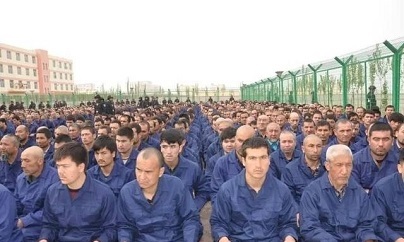 A Xinjiang Re-education Camp | Wiki Greens create slaveryWhat’s more important — freeing people in slave labor camps today or making the world one hundreth of a degree cooler a century from now? Oh the dilemma. It’s just another unintended consequence on the road to Climate Heaven. If solar panels were actually efficient and competitive they’d make network electricity cheaper and theoretically, at least, there would be money to pay for real wages. Instead competition is cut-throat, and no country with a lot of solar panels can actually afford to make solar panels. New Walk Free study shows Australia’s push for green transition exploits slave labourBy Jenna Clarke, The Australian Leading Australian philanthropist Grace Forrest is warning Climate Change and Energy Minister Chris Bowen that the push for Australia’s green energy transition could force more people into slavery. The comprehensive international study, five years in the making, shows Australia’s supply chains and products at risk of human exploitation for the first time, including solar panels which are imported from China at a cost of close to $2bn. “For the first time, we have solar panels in our top five most vulnerable products of modern slavery. This is a confronting reality, one that speaks to compounding an intersecting crisis,” Ms Forrest told The Australian.vMs Forrest said. “You can‘t harm people to save the planet.” If we cut back on slave made solar panels, where will the solar panels come from, and how much more will the forced energy transition cost? It’s no accident 84% of all the world’s solar panels are made in ChinaNo one else can compete with slave labour, and no one else has as much coal fired electricity. China has cornered the solar panel market and supply lines. Squint closely to see “the rest of the world”…
Ironically, Grace Forrest, who founded “Walk Free” is funded by her father, billionaire Twiggy Forrest who wants to build the largest ever solar farm in the world in the Northern Territory. That may explain why she bizarrely doesn’t believe in boycotts. Instead she wants a bigger government with more rules (just a lighter version of slavery, eh?): From fashion to solar panels, taint of slavery stalks firmsHans van Leewen, AFR …Walk Free boss Grace Forrest says that although consumers should shop carefully, the real onus for tackling the problem is not on them: it is on governments and businesses – which are not doing enough, despite the strictures of the five-year-old Modern Slavery Act. She wants to see non-compliant companies hit with financial penalties. And she urges politicians not to worry about exacerbating the cost-of-living crisis, because paying exploited workers a fair wage would boost prices by as little as 1 per cent. She said Walk Free did not support boycotts, and was not asking consumers to take responsibility for eradicating modern slavery. As with climate issues, the equivalent of greenwashing could make it too difficult for the individual shopper. Magical thinkin’ — apparently businesses can do this without hurting consumers: “We actually argue the business should absorb that cost, rather than it being for the consumer,” she told The Australian Financial Review while visiting London to launch Walk Free’s latest Global Slavery Index. We presume she flew to London for the launch. Nice work if you can find a philanthropist to pay for the trip. But hey, she could have been playing the party-circuit, and instead she is raising awareness of modern slavery. Slavery in other G20 countries means we all need more laws, and more lawyersSomehow because there is slavery in China and it’s a G20 country, it follows that Canada and Australia need to bring in legislation and employ more bureaucrats. “The fact is that 50 per cent of the world’s people living in modern slavery are residing in G20 countries,” she said. This statistic showed that the slavery problem was not just in poorer countries – “it’s over here, not over there”, as she put it. “We would like to see an increase in legislation across the G20 countries. Canada has just announced this. Germany is going to see their example set across the EU in the coming years. We just need the political will now to step up and do that everywhere.” Ms Forrest says “You can‘t harm people to save the planet.” Jo Nova says, “They are already harming people, and they probably won’t save anything.” What’s wrong with boycotts? REFERENCE GLOBAL SLAVERY INDEX, Walk Free
Only two men were central to the Green policy stranglehold that cripples Germany today, and one has just been sacked. But look at how easy it was for foreign interests and activists to influence bizarrely suicidal national policies, and how they used the age old art of nepotism. Eugyppius A vast foreign-funded climate cabal with a death grip on policy is currently fighting hard to crash the Federal Republic of Germany with no survivorsThe international press has maintained near-total silence on the escalating insanity of what is happening in Germany. Media outlets that routinely celebrate German progress towards energy transition don’t want you to know that Europe’s dominant industrial power has entered a deeply destructive political and administrative spiral from which it may never recover. The fault lies with the self-defeating and unworkable energy policies that have a death grip not merely on the Scholz government, but on the entire administrative state. Germany leads the way in the big green experimentAt one point last winter 12% of the entire Germany GDP was being consumed in the energy crisis. Factories are leaving Germany because energy prices are unbearable, but defying all reason, Germany has just closed its last nuclear power plants and is trying to ban gas and oil heating at home too which will only drive up demand for electricity at a time when electricity is hard to find. Germans burned so much wood last winter at times they ran out, and now their government wants to ban wood stoves too. Eugyppius explained a couple of weeks ago how a Der Speigel article (surprisingly) revealed that two key political players installed their Green friends in positions of power. And just this week comes the news that one of those men has just been forced to resign due to the same nepotism that was a core part of the climate-cabal plan. Today, Der Spiegel (of all magazines) published a lengthy piece on the origins, funding and rise to power of the “Eco Network” currently controlling German energy policy, and I want to discuss it in detail, because it is so revealing about so many things.  Patrick Graichen, Germany. Patrick Graichen was a top state secretary in charge of energy and climate issues until news broke out that he picked his best man to head up the German energy agency and everyone felt that was very suspicious. Especially when it turned out his brother and sister both work for another think-tank that gets money from the Ministry. His sister is also married to another state secretary. But the trouble in Germany began ten years ago with the Green politician Rainer Baake — who became known as Mr Energiewende himself (the man who created the “Energy Transformation”.) He’s the one who first appointed green technocrats in every corner of the German deep state. By the time German voters picked a centre right party in 2018, the Green momentum wrapped around them and just kept moving. Baake also founded the most powerful green think-tank in Germany — and appointed his protege Patrick Graichen to head it. See how this works? The think-tank was his springboard into the highest levels of German government, and this think-tank was funded in part by American philanthropists. As the old-guard industry-friendly civil servants in the German bureaucracy began to retire, Baake filled their posts with Green technocrats wherever possible, such that when control of the Ministry passed to the centre-right CDU in 2018, the damage was done. The institutional momentum had already shifted towards climate change and begun to gather strength under its own power During his five-year tenure as state secretary, Baake appointed Graichen to head the Agora think-tank, which began churning out policy papers, sponsoring Green scientific research, and gathering an ever-growing crowd of loyal advocates and technocrats. This paid off: [As Der Speigel says, Graichen’s name was used all through the German parliament]. Three easy steps to create a climate fixation in Parliament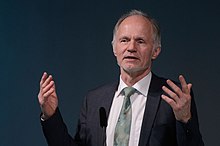 Rainer Baake (Staatssekretär für Energie, BMWi, Berlin), Foto It’s a three-step process. 1) Activists and regime-approved scientists identify and make noise about looming problems, and then 2) think tanks write pages and pages of legislative and regulatory solutions for them. All of this happens largely out of sight, until 3) politicians respond to the demand stirred up the activist arm, and having no real expertise or understanding of anything themselves, they have no choice but to enact the proposals that people like Graichen feed them. Here, then, is the explanation for Robert Habeck’s stubborn idiocy since last Fall. As soon as the Greens entered government, he made Graichen his state secretary for energy, and it is Graichen and the army of technocrats he commands who have been behind every political disaster since. The farcical response to the energy crisis, where these people were actually forced to work contrary to their principles and buy enormous quantities of coal (from Russia no less); the botched but nevertheless completed nuclear phase-out; and, finally, the catastrophic changes to the Building Energy Act, which will immiserate millions of Germans and do absolutely nothing to change the temperature of Earth. The influence of American millionaires:
This is not the first time we’ve found unlikely American activists and philanthropists behind European – and specifically German – climate activism. Spiegel explains, ominously, that “Harvey sees Europe as the key to preparing a climate-neutral future” and that this reason “he directs millions … to support the likes of Baake and Graichen.” This man, who hardly appears in Anglophone media and doesn’t even have an English-language Wikipedia page, has been christened by Die Zeit as “the most powerful Green politician in the world.” Nepotism is important in the climate mafiaEugippius updates the sacking of Graichen for nepotism and explains why Nepotism is part of the plan: Energy-transitioner-in-chief Patrick Graichen resigns, in the first serious setback to the climate cabal strangling GermanyFirst of all, you have to understand that the transition to renewable energy is no joke. If it’s ever fully accomplished, it will mean the immiseration and deindustrialisation of Germany.
The truth is that Graichen’s relatives and personal friends are strewn throughout the think-tanks and the NGOs of the climate cabal. The problem for Graichen and his associates, is to create the illusion of a single unified Science that requires nothing but their specific desired solutions. They use all of the organisations under their control to outline and propagate this Science, and flood bureaucrats and politicians with white papers dictating what exactly they have to do. Everybody has to be on the same page for this. Personal connection within the climate cabal are therefore highly important; mafias are run the same way.
I would have thought it would be depressing to read the details, but it feels useful to know the enemy. Though, of course, in this case, even though both key German players may be out of their official major roles, the team they established are still there. The latest polls show that 40% of Greens voters have abandoned the party leaving it at just 14% of the vote overall. That’s got to hurt. h/t Climate Depot, David E.
This is exactly why the Big-Gov-Corporatist cartel wants to co-opt or destroy independent profitable corporations. In this case, companies that don’t need Big-Gov are free to point out the hypocritical inanity and absurdities which the lap-dog dependent industries like wind power and solar cannot. Sadly, companies like Exxon still need to be brave because Big-Gov is so big, it is always the largest potential client and holds the sword of mendacious legislation, licensing and regulation as well. Exxon Crushes Progressive Dreams That “Net Zero” Has Any Chance By 2050: It Would Mean Collapse In “Global Standard Of Living”By Tyler Durden, ZeroHedge The US supermajor pushed back against investors pressing the company to report on the risks to its business from restrictions on greenhouse gas emissions and potential environmental disasters when in a reply to proxy advisor Glass Lewis, Exxon said the prospect of the world achieving net-zero carbon dioxide emissions by 2050 is remote and should not be further evaluated in its financial statements. A shareholder proposal seeking a report on the cost of having to abandon projects faces a shareholder vote on May 31. Glass Lewis backed the initiative, concluding Exxon could face material financial risks from the net-zero scenario. Exxon disagreed, and said the world is not on a path to achieve net-zero emissions in 2050 as limiting energy production to levels below consumption demand would lead to a spike in energy prices, as observed in Europe following oil sanctions against Russia over Ukraine. Exxon, is of course, correct however that won’t stop the green fanatics from beating the drum that somehow the world can transition to “green” energy (at a cost of some $150 trillion mind you) in the next 27 years without an energy cataclysm.
 Click to enlarge — Source Exxon (via ZeroHedge) Moments like this expose why the Government-Corporate cartel doesn’t choose to support any “low emissions” industry that is financially viable in and of itself. They can’t support clean high temperature coal plants, even though it would be a sensible and cost effective way to reduce CO2. These new plants could have independent voices which might say inconvenient things and we can’t have that. Companies that sell useful products don’t need the government like unreliable, uncompetitive wind and solar plants always will. But companies that depend on government rules, subsidies and largess will always be cheerleaders for the biggest government possible. They will always obey. h/t to Jim Simpson Photo by Farragutful The Greens are polluting the world againLast week I told Mark Steyn that heavier cars would wear down tyres faster, which would vaporize more tyre chemicals in the air. And here we are a few days later with news stories saying that EV’s wear out their tyres 50% faster, which is not just inconvenient and expensive, and uses more oil, but unleashes as many as 200 different chemicals into the air and water as well. With 2 billion tyres made around the world each year and the forced EV transition supposedly coming any day, it’s yet another problem to be solved “on the fly”, damn the consequences. By 2050 there are estimates that tyres will be the worlds largest source of microplastics. Not so good for the corals and fishes, but who cares about them right? If Greens ever want to start caring for the environment or the poor they could always cut half a ton of weight off an EV just by buying an internal combustion engine car instead. It feeds more plants than a lithium battery does too.
h/t Spangled Drongo Story by By Nick Carey and Barbara Lewis, Reuters
LONDON (Reuters) – Tyre-makers are under pressure to almost literally reinvent the wheel as regulators turn their scrutiny to tyre pollution that is set to surge with the rise of electric vehicles (EVs) and threatens to undermine those cars’ green credentials. When tyres make contact with the road, tiny particles are abraded and emitted. The extra weight of EVs linked to their batteries means this little-discussed form of pollution – from an estimated 2 billion tyres produced globally every year – is becoming a bigger problem. Emerging research is showing the toxicity of tyres, which on average contain about 200 components and chemicals, often derived from crude oil. While critics say tyres contain many toxic and carcinogenic chemicals, so far there is only really consensus around one – 6PPD, an antioxidant and antiozonant found in all tyres that reduces cracking. Developed during the Korean War, research shows that when 6PPD reacts with oxygen or ozone it forms 6PPD-quinone, which has been blamed for mass deaths of Coho salmon off the U.S. West Coast. Particles from tires are expected to be the largest source of microplastics potentially harmful to aquatic life by 2050. Michelin estimates that globally tires emit around 3 million tonnes of particles annually – and create another 3 million tonnes of particles from road surfaces. It’s just another unintended glitch on the road to Green Heaven A group called Emissions Analytics published a report comparing real-world tailpipe particulate mass emissions to tire wear emissions. And the emissions from wear-and-tear was apparently around 1,850 times greater than what comes out of the tailpipe. (Which shows how good those air filters and engineering is in cars). “Where are the environmentalists”?These issues of pollution are not being actively pursued by Greenpeace as far as I can tell, but by the free market — the tyre companies that want to brag about their better tyres.
Electronic sensors can pick up phantom electrical noiseIn the last thirty years the Bureau has installed electronic thermometers all over the country. But unlike the old glass ones, the new sensitive equipment can not only pick up freak gusts of hot air, they can also pick up electrical interference. Theoretically, electronic thermometers could report phantom measurements induced by large electric fields, like perhaps by an airport radar as it sweeps through the electronics. Indeed as Lance Pidgeon points out, the cable that runs from the platinum resistance probe runs out of the Stevenson screen, down the pole, under the ground and pops up at the electronic data-logger some 6 to 10 meters away. This makes for a nice long aerial ready to pick up “noise” and feed it into the data-logger. Those airport radars produce huge electric fields — all it takes is slight induction of a voltage difference across the 10m cable and voila… the data logger records a “warmer” second. Here’s the small forgotten airport radar at Heathrow standing about 12 stories high. Imagine the power that puts out? Electromagnetic interference could also be triggered by mobile phones or radio waves, lightning, two-way radio or television broadcasting as well. Theoretically, at least, it’s possible that any “hottest ever temperature recorded” in newspaper headlines could have been generated the moment the pilot messaged the control tower. Or it could be a maintenance truck driving past, someone in the car park starting their engine or anything electronic really. This was never an issue with a glass thermometer. As Jennifer Marohasy explains, electronic engineers appreciate this point immediately: As an analogue engineer recently explained to me, because of all the radio interference at airports, it is not really a place to be recording temperatures with resistance probes. Yet this is exactly where most of these temperature recording devices are now located – and not just in Australia, but across the world. So, the average global mean temperature may not only include the blast from a jet plane landing at Cordoba, Spain, but also the chatter from pilots and the control tower because temperature is now primarily measured as changes in electrical current and at airports. Is this a problem? Who knows — The BOM is hiding the data that mattersThe Bureau of Meteorology say that the new electronic gizmo’s are set up to mimic the old glass thermometers. They carefully calibrate and compare the two types of thermometers in the same box at the same time and in many sites. They have that data. If the electronic systems were working similarly to the old glass ones, and were protected or filtered from the noise, years of side-by-side measurements would show a close correlation and minimal disparities. Too easy, right? But for some reason, the BoM have to hide the parallel data and fight tooth and nail to keep it hidden from the prying eyes of skeptics — temperature data is “a national secret” or something. Perhaps they’re just trying to save Australians from getting depressed and angry. If hypothetically, airport radars and tarmac caused phantom “global warming” all those trillion dollars worth of solar panels and wind farms would be a total waste of money. To solve global warming we’d just need to go back to glass thermometers. Sighting the odd phantom hot-second…We know there are glitches in the system, even if we don’t know exactly what causes them. On the BOM live reporting pages there are often differences within the same minute that are hard to explain. In this one below from Pearce Air base at 11:50am on the 6th of March there was a 1.3C difference between the highest reading of the minute and the last reading of the minute. Sometime in that sixty seconds either the air temperature changed radically, or there was noise in the system. These kinds of anomalies only show up briefly on the BoM observation pages. (Eg NSW, VIC, QLD, SA, ACT, NT, Tas, WA.) Someone has to be watching to notice when the highest temperature of the day occurs at the same minute as the current observation. The ten-minute data comes from the last reading of the minute, but the highest or lowest temp recorded can cherry pick any second — effectively fishing for the extremes. And it doesn’t average out. See below — for lots of reasons there are more extremes in hot afternoons than there in the cold hour at dawn. Strange noise pops up in other observations. Here below are the measurements every half hour at Maryborough one day in summer. Ken Stewart had noticed that the BOM have different “live” reporting systems and they often conflicted. The 30-minute observations reported 32.2C at exactly 1pm, but the “Latest Observations at Maryborough” reported 33.7C at exactly the same time. That’s a 1.5C temperature difference, and in the same minute? From the post: One second records in Australia — how “noise” creates history and a warming trend.
Here’s a similar thing at Thargomindah.
The hottest time of day is the noisiest tooLance Pidgeon also points out that thermal noise, just from the heat in the probe — is a problem in electric probe thermometers — it’s called Johnson noise, and would be worst at the hottest time of day. The BOM would argue the thermal heating noise is a well known phenomenon, but as Lance points out a single electronic gizmo thermometer can’t be perfectly tuned to both maximum and minimum thermometers at the same time. Maximum thermometers were traditionally mercury thermometers, but minimum ones were more likely to be alcohol thermometers and they have slightly different profiles. It’s also true to say that hot blobs of air float around at 1pm, rising off tarmac, but not to many cold blobs levitate 5 feet off the ground at 6am, or any time. It isn’t symmetrical. There is a lot more turbulence, volatility, and also plane traffic and radio chatter at 2pm in the afternoon affecting the maximum temperatures. And as long as the maximums are being warmed, the headlines of deadly heatwaves will keep writing themselves, and the average temperature of the day will still keep rising too. For the technically inclinedThe BOM claim to have worked on the platinum resistance probes to make them mimic glass thermometers, but problems are more likely to be in the long cables and other electronic gear like the data-logger. Lance Pidgeon: Breaking the automated measurement system into the two parts that are several meters of cable apart, i blame the data logger for most of the problem. Not the simple resistance probe even with its dubious time constant. Specifically i blame the lack of averaging. The small signals are vulnerable to the many forms of higher frequency electrical noise generated both within and external to the system. The missing averaging could cancel most of this out by lowering the frequency response to near that of a glass thermometer. Thus rejecting most of the electrical noise but allowing the desired signal. If the BOM had sorted all this out, why are they hiding the parallel data? Electromagnetic interference is a well known problem, at least among electronic engineers, if not meteorologists. The WMO – World Meteorological Organisation warns of electromagnetic interference and talks about testing for such. (vol 5, Section 4.2.3) In 2018 edition – Volume V: Quality Assurance and Management of Observing Systems part 2 CHAPTER 2. SAMPLING METEOROLOGICAL VARIABLES at 2.1 This pearl of wisdom. In general, sensors respond more slowly than the atmosphere changes, and they add noise. Sensors also do other, usually undesirable, things such as drift in calibration, respond non-linearly, interfere with the quantity that they are measuring, fail more often than intended, and so on, but this discussion will only be concerned with response and the addition of noise. The bottom line is that it’s a real threat, but a very solvable problem. The question is whether the BOM have solved it. And the only test that matters is not a certificate from an inspector but the real life data, en masse, and in toto. The BOM need to publish all the parallel temperature data so Australians know that the equipment is not just “world class” (which is appalling low) but comparable to the old glass thermometers. Conflicting temperatures that change by a degree within one minute tell us something is wrong. The BOM cover up tells us that too. More information See all observations for NSW, VIC, QLD, SA, ACT, NT, Tas, WA. KensKingdom: How temperature is measured in Australia Part I/ The WMO (World Meteorological Organisation) 2018 edition – Volume V: Quality Assurance and Management of Observing Systems Information on Primary and Secondary Airport Radar Why is temperature data a national secret? BOM still hiding data
The country is allegedly at Stage 6 blackouts with “Stage 8” appearing to be a near certainty (if not there already). But apparently they are making plans to invent a “Stage 16” just in case they need it. “Luckily” South Africa may meet Climate Goals to cut emissions by 2030, though possibly destroy their civilization in the process. SA may face power cuts of up to 32 hours, says EskomJohannesburg – South Africans should brace themselves for the possibility of being plunged into the worst darkness ever since the start of load shedding, as load shedding up to stage 16, meaning an unspecified 32 hours of power cuts, is anticipated to avert the total collapse of the grid owing to mounting demand. A document titled “voluntary” NRS048-9 edition 3, which would in unforeseen emergency circumstances allow Eskom to implement drastic load shedding beyond stage 8, is currently being finalised by the National Regulatory Services Association of SA, a voluntary association assisting with regulating load shedding. “Most municipalities and Eskom-supplied areas have adopted a two-hour load-shedding schedule. On a two-hour load-shedding schedule, you would expect to be off for 32 hours in a 32-hour period (under stage 16),” she said. Not so reassuringly, the Eskom spokesperson said it would only be implemented “if there were emergencies threatening to collapse the grid, something that might be possible during winter.” She further maintained that the country was only at stage six blackouts and “doesn’t seem to be moving towards that direction of 16.” Thus confirming that they were thinking about it. Unfortunately an energy expert said that things have been worse than stage six for a long time and Eskom just lie and call it “stage six” regardless. Energy expert says Eskom lying to SA about load shedding, adds country already passed Stage 6 blackoutsSee-Anne Rall, IOL As more insurance companies are changing their policies regarding damage to items from load shedding, experts believe the country is teetering on the edge of a total blackout. On Monday, Eskom announced the implementation of Stage 6 load shedding following the failure of two generating units. Eskom said breakdowns are currently at 18 016MW of generating capacity while the generating capacity out of service for planned maintenance is 3 987MW. Group chief executive at the Whitford Group and energy expert, Adil Nchabeleng, said the country has technically moved beyond Stage 6 load shedding with some areas having no electricity for well over the hours as per Eskom’s load shedding schedule. In an interview with “Morning Live“, Nchabeleng said Eskom was lying to the public. Nchabeleng said some areas go for up to 12 hours without electricity. “Half of the country, almost 80% of the country is without electricity at every given time,” he said. Things are so bad, two years ago the government ordered in 1,220 megawatts of floating Turkish Karpowerships which will burn low sulpfur HFO, or “oil” as normal people would call it. Though apparently the ships will have to anchor off Mozambique, and run with some energy sharing export deal — because environmentalists didn’t like it and Eskom “demanded indemnity against any adverse outcomes from corruption allegations.” Life gets so complicated when corruption and green fantasies run rife.  Karpowership — runs on Natural Gas, LNG or Low Sulfur HFO. In a kind of parody, when a small town spent $5m US to build their own 4.3MW solar farm they barely started operation when State owned Eskom took them to court and “won on a technicality” thus stopping the town from using their own solar-plant to reduce their own blackout times. So the solar plant produces nothing at times while the country is racked with an energy crisis. The script writers in Yes Minister didn’t even see this coming. S.Africa’s Blackouts Force Solar-powered Town To Life In The DarkIn the ensuing case, Eskom argued that RFS had not been granted authorisation to carry out its own blackout programme. The monopoly explained that Frankfort still needed to draw power from Eskom’s grid. The town’s solar panels were not enough to cover its needs, and its system did not have batteries in which to store excess power and draw on it at time of need, it said. Why? The town might set an example for other towns: If the town were allowed to dispense with Eskom’s blackout schedule, others could follow suit, causing anarchic fluctuations in supply and demand that could cause the national grid collapse, the company contended. “If the floodgates are thus opened, Eskom’s ability to ensure the safety of the grid… will be severely compromised,” it said in its affidavit. So solar power is NOT the solution to an energy crisis. Tell the world, eh? Though possibly the real fear is that people might figure out their own solutions? Energy companies, no matter how crooked and badly run, really seem to own The People, and these poor businessmen sound pretty desperate. “If they are not going to allow us to use the solar… or to use our own electricity, we don’t have any choice, we will have to take the law into our own hands,” warned Pretorius, who grows cereals and relies on electricity to power the irrigation system. “It’s a matter of survival.” Let’s not forget that fifty years ago South Africa built the Arnot Coal Power Station in just four years. The first power stations were built in South Africa in the 1920s but now, people are hot-rigging electricity substations to steal electricity, and there are estimates that as many as 50% of the customers in Soweto are illegally connected. Control your climate with blackouts?It’s hard to believe Bloomberg thought this was a good story. They see this as some kind of “success”, as if the megatons of carbon saved to pretend to reduce world temperatures by 0.0001 degrees Celcius in a hundred years made this kind of pain worthy: South Africa is ahead of its target for cutting emissions of greenhouse gases.
Output of the climate-warming gases from the world’s 14th-biggest emitter is already falling even though its Nationally Determined Contribution, a target adopted by the cabinet in 2021, only forecast a decline from 2025. “It’s unintentional,” Crispian Olver, the executive director of South Africa’s Presidential Climate Commission, said in an interview in Johannesburg on Monday. “We reckon we are well within the range” of meeting the 2030 target, he said. South Africa aims to reduce its emissions to between 350 and 420 megatons of carbon dioxide equivalent by 2030, bettering a target set in 2015 of emitting between 398 and 614 megatons by that date. The 2021 goal was key to South Africa securing pledges of $8.5 billion in climate finance from some of the world’s richest nations.
Best wishes for our South African friends! Thanks to Stephen Neil and Climate Depot
The EU is fracturing over energy, and not a day too soon…
|
||||
|
Copyright © 2024 JoNova - All Rights Reserved |
||||

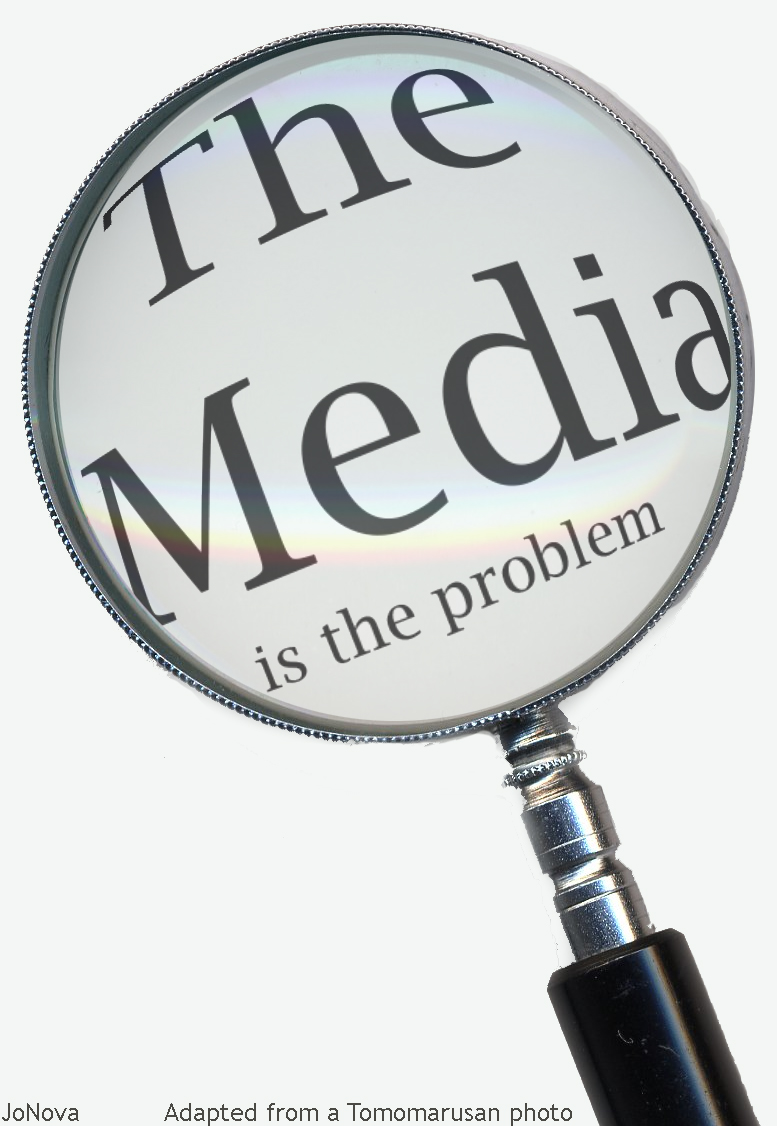







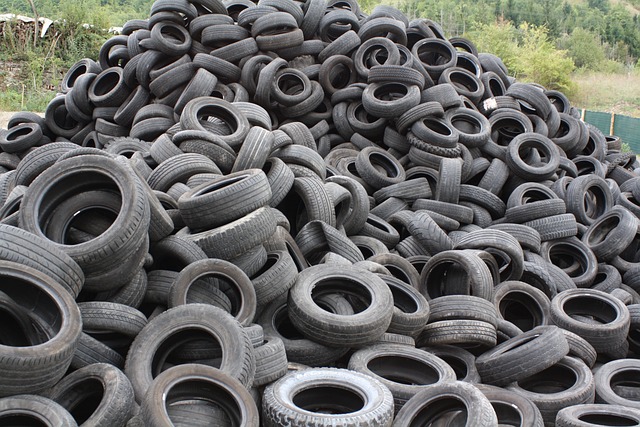


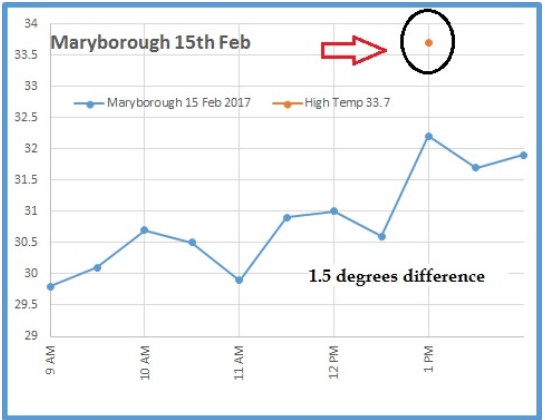
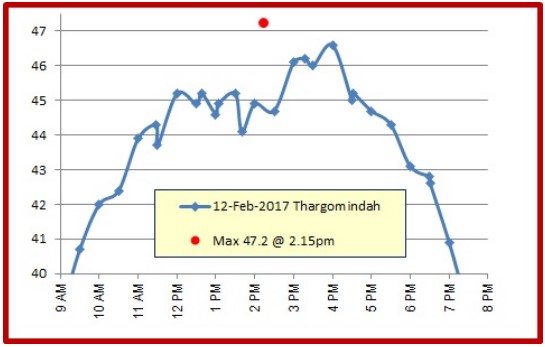

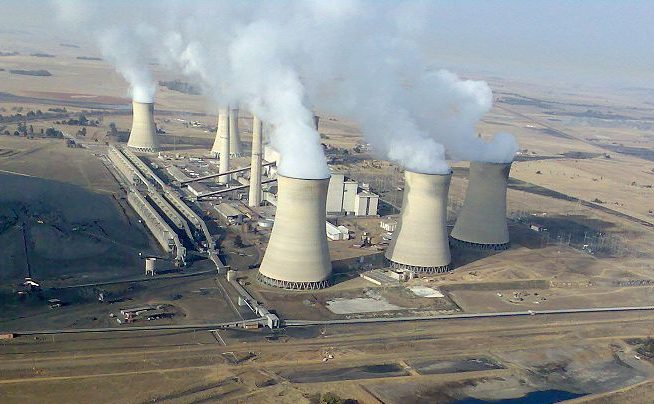

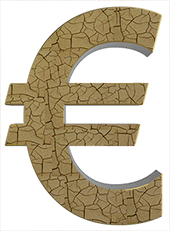

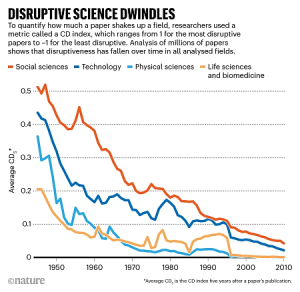











Recent Comments